How to Get to the Mauna Kea Summit for an Epic Sunset in Hawaii
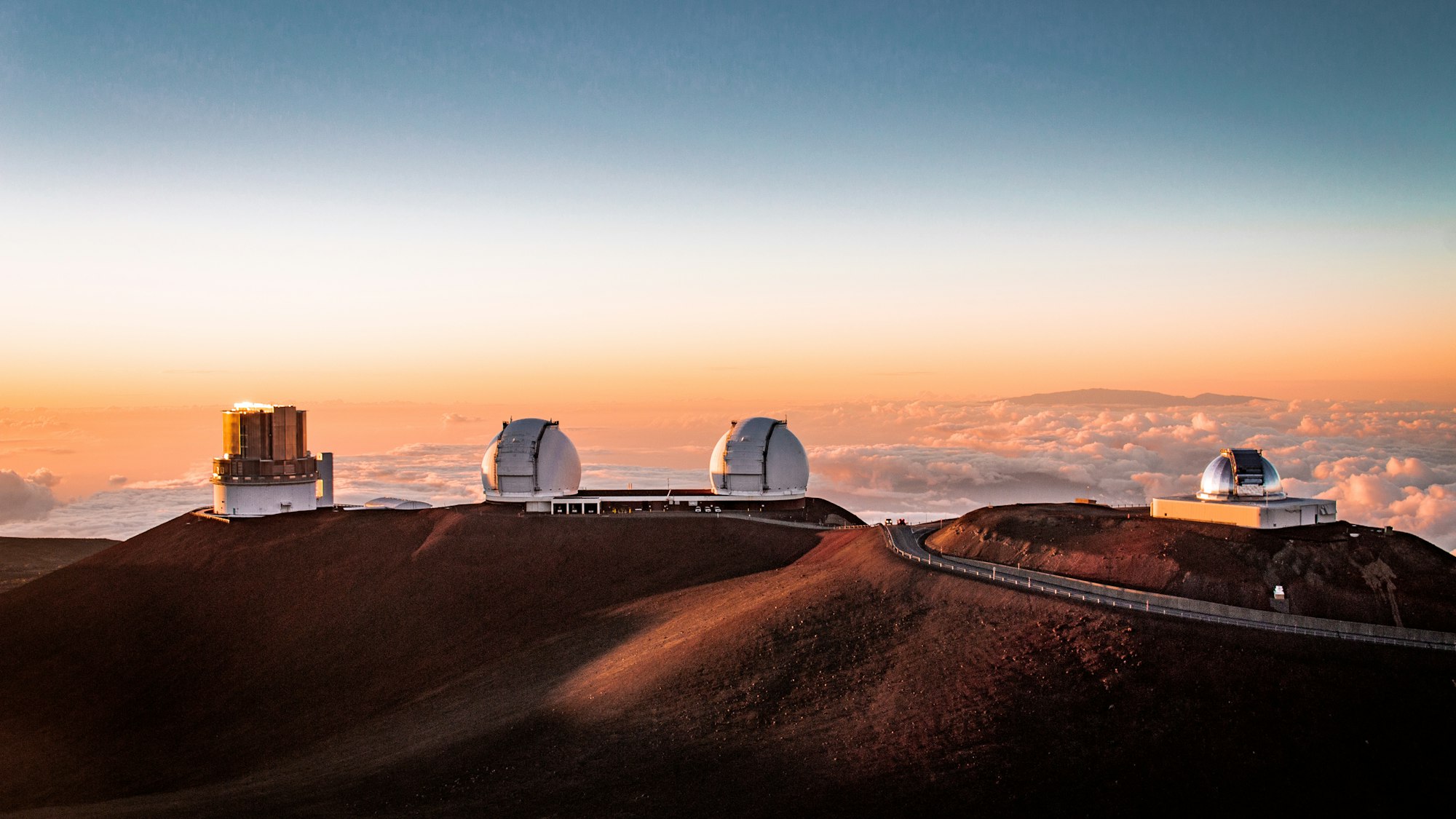
If you're thinking of visiting the Mauna Kea summit to witness a breathtaking sunset on your next trip to the Big Island, this post is for you.
Our entire trip to Hawaii was centred around the awe-inspiring Mauna Kea, known for its snow-capped peak and iconic white-dome stargazing telescopes. Watching the sunset from this ancient volcano remains one of our most cherished travel memories.
Bookings: Some of the links in this article are affiliate links. This means that if you choose to make a booking, we will receive a small commission at no extra cost to you. Thank You!
Where is Mauna Kea, and Why it's so Unique?
Mauna Kea, situated on the Big Island, is one of Hawaii's five volcanoes. It has been dormant for a while, but was last active 4,600 years ago.
Admired globally and towering alongside Mauna Loa over 13,800ft above sea level, Mauna Kea is the Earth's tallest volcano. If measured from the bottom of the ocean to its peak, it would be the world's highest peak, twice as tall as Mount Everest.
It takes roughly an hour to get to Mauna Kea from Kona, Hilo, or Waimea (Kamuela). We suggest saving the destination on Google Maps before embarking on the journey, and following the directions.
How to Get to the Mauna Kea Summit
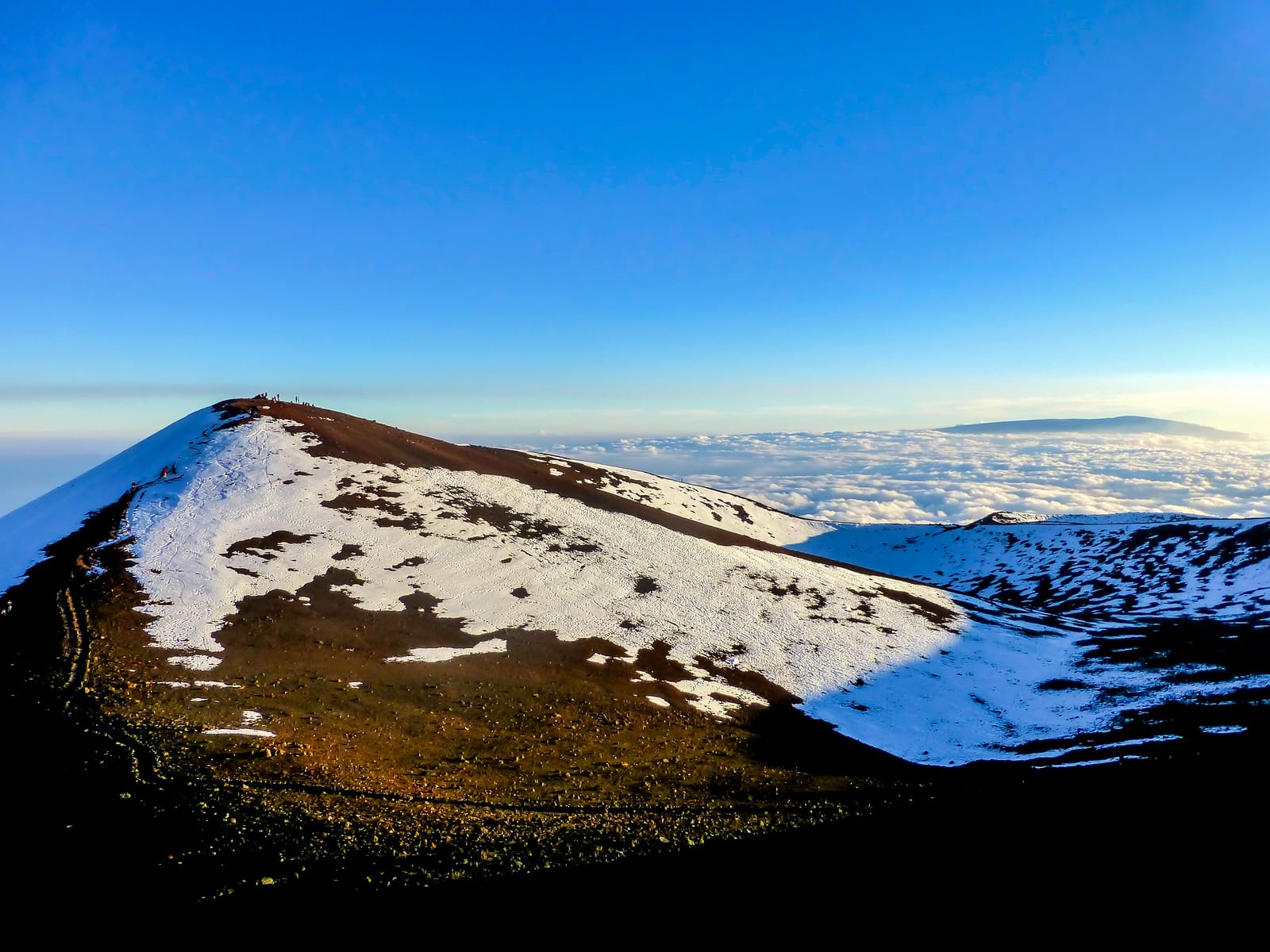
To climb Mauna Kea's stunning peak, you have four options that suit different budgets, time limits, and travel styles.
Take a Mauna Kea Summit Tour
If you're interested in touring Mauna Kea stress-free, check out the Mauna Kea summit sunset and stargazing trips available at our trusted partners, GetYourGuide.
Keep in mind that no shuttles or tours are available from the Visitor Information Station, so you'll need to make arrangements on your own.
We highly recommend booking in advance. But while we were initially disappointed that all the tours were fully booked during our visit, we had an adventurous experience at a lower cost on our own.
Rent a Four-Wheel Drive Car
When planning a trip to Mauna Kea, ensuring you have a safe and enjoyable experience is important. One of the best ways to do this is by renting a four-wheel-drive car. The road can be steep and gravelly, so a four-by-four Jeep is the most suitable vehicle if you prefer driving yourself.
If you rent a small vehicle, you won't be allowed to continue past the Mauna Kea Visitor Information Station for safety reasons. Before you head out, check with your rental company to see if driving up to the Mauna Kea summit is permitted.
Also, talking to a salesperson beforehand is a good idea to avoid any unexpected car damage fees.
Hitchhike to the Summit
The Mauna Kea Information Station is situated at around three km mark and can be reached by a two-wheel vehicle.
However, remember that the road to the information centre is steep and often foggy so be cautious and watch out for "invisible cows". You'll see signs as you ascend the volcano :)
Despite the added obstacle of "invisible cows", we made it safely to the visitor station at the top. Our experience with a small rental car was quite challenging, so drive carefully and turn back if you feel your vehicle is struggling.
Upon reaching the information centre, park in the designated parking area and hitchhike to the summit. But be prepared to wait for a short while - we were fortunate enough to get a ride in only about five minutes. We hitchhiked with a friendly Swiss couple.
Once at the top, exchange phone numbers or agree on a meet-up time to avoid being stranded. Note down the driver's number plate, just in case.
And don't forget to show gratitude by treating your driver to a cup of hot chocolate when you reach the visitor centre.
Another tip is to prepare beforehand for the freezing temperatures and layer up. The temperature drops dramatically at the summit. Otherwise, the visitor centre has nice thermal gear and accessories available for purchase.
Parking is limited to 115 vehicles on a first-come, first-served basis. The Maunakea Visitor Information Station is open every day from 9 am to 9 pm.
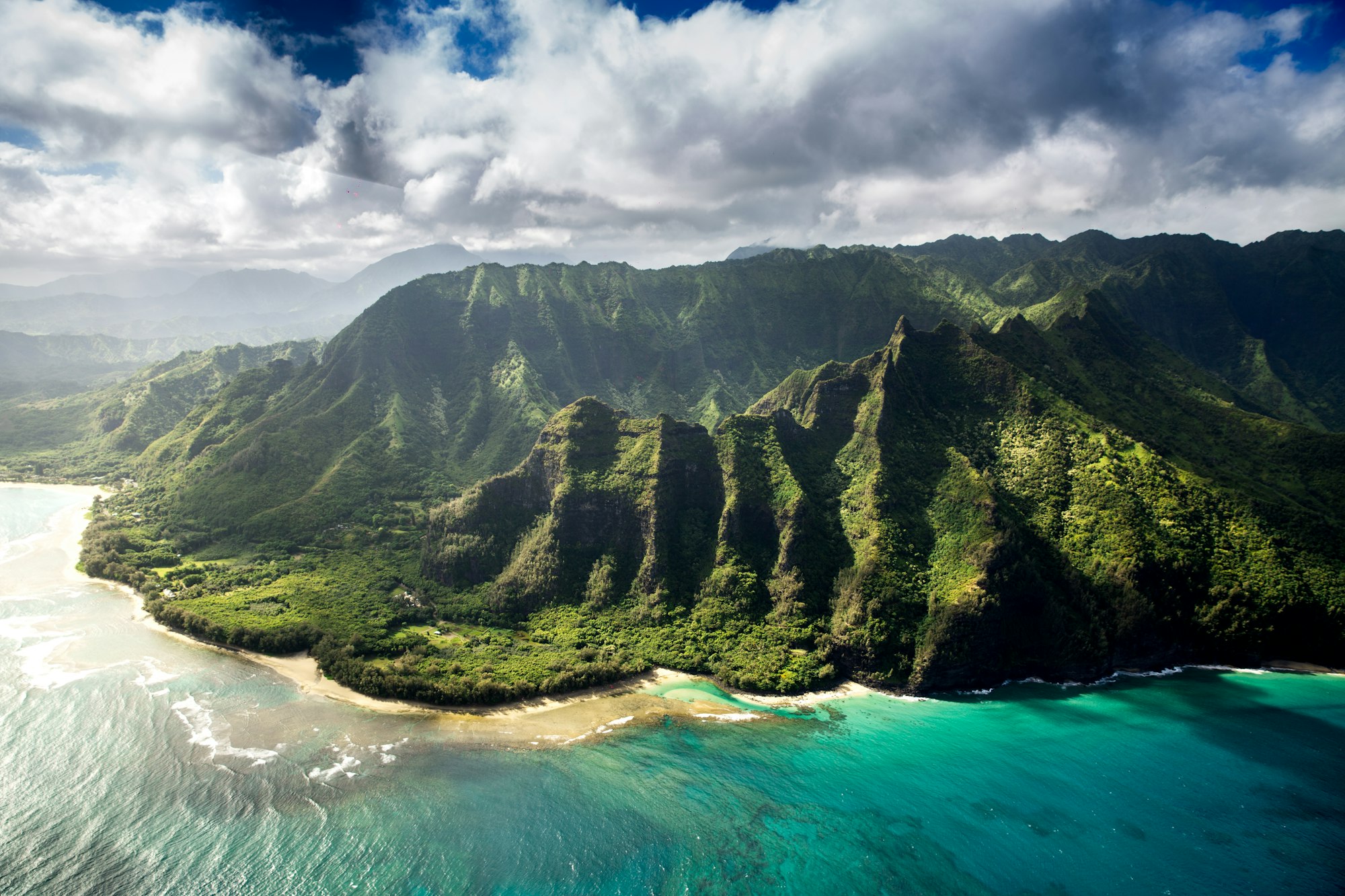
Hike the Mauna Kea Trail
Hiking the Mauna Kea trail is another option - it's a six-mile trek that begins at the Visitor Information Station.
The hike could take at least eight hours or more, depending on your fitness level. So make sure you have enough time to complete the journey and leave the Summit before night falls.
For additional information on trekking the volcano, visit the Maunakea Visitor Information page.
Stargazing at the Mauna Kea Information Station
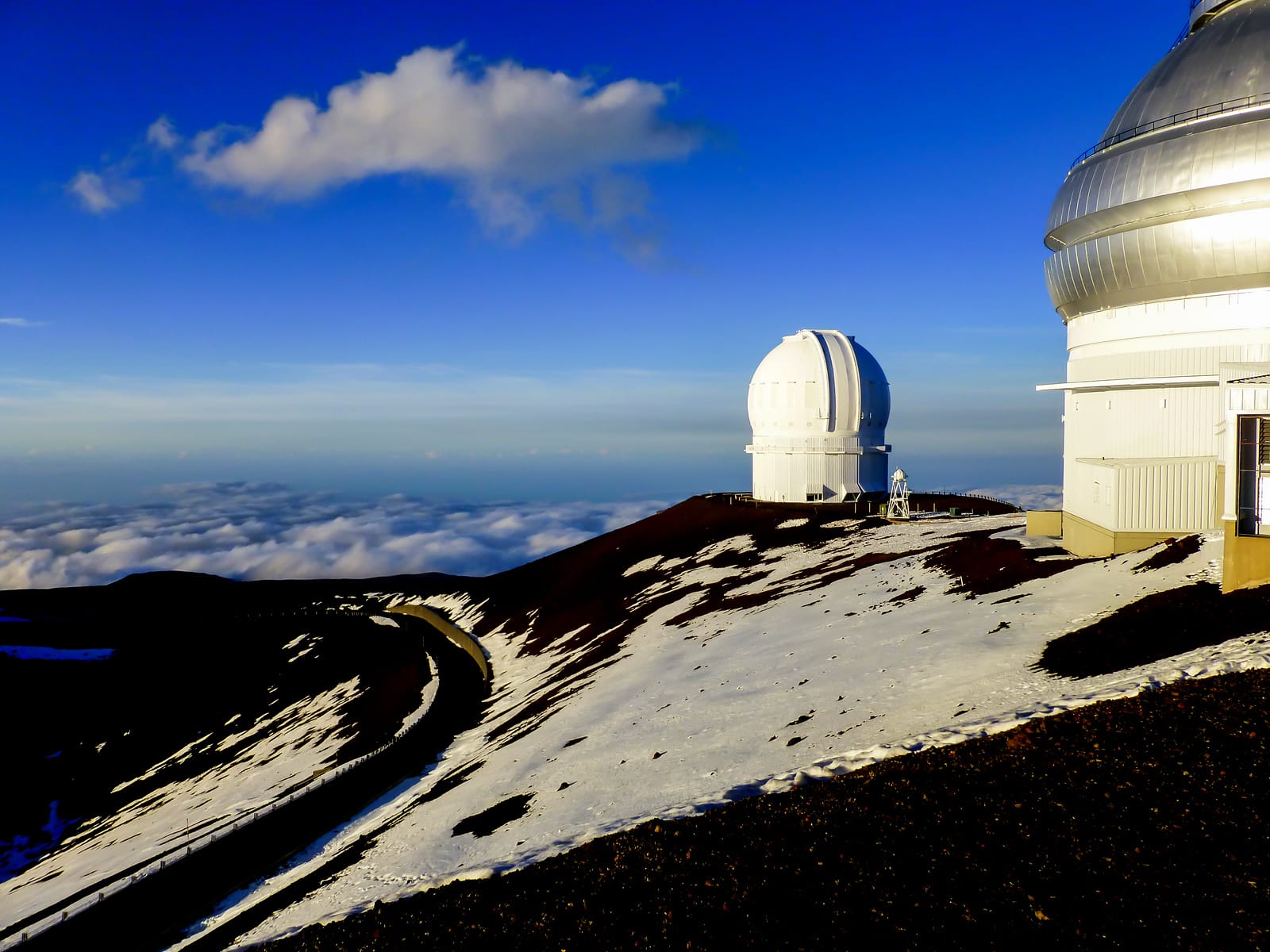
Visiting the Mauna Kea Information Station is a must-do on your way to the summit. The staff there are friendly and knowledgeable, and the Mauna Kea rangers are always happy to answer any questions.
We enjoyed exploring the interactive displays and browsing astronomy books and souvenirs. But the best part was the stargazing activity.
After descending the summit, we highly recommend peering through the large telescopes operated by staff and volunteers while sipping piping hot chocolate. It's a fantastic experience.
Weather permitting, the stargazing activity is available on Thursdays, but be sure to reserve a spot beforehand via the official website.
Mauna Kea in the Daylight, What's There to Do?
When visiting the volcano during the day, you can explore the Observatory, home to 13 international observatories from 11 countries. These are the world's largest and most advanced telescopes, designed to research the stars.
Additionally, you can hike to the summit of Lake Waiau, the sixth-highest lake in the US and a sacred site in Hawaiian culture.
Or, go snowboarding!
The name Mauna Kea refers to the snow-covered summit of the volcano, hence its translation as "White Mountain".
Although skiing and snowboarding are possible activities on Mauna Kea, it can be precarious if you're new to such outdoor activities. No supervision or equipment is provided, so you'll want to be self-sufficient.
What's the Weather Like at the Crown of Mauna Kea?
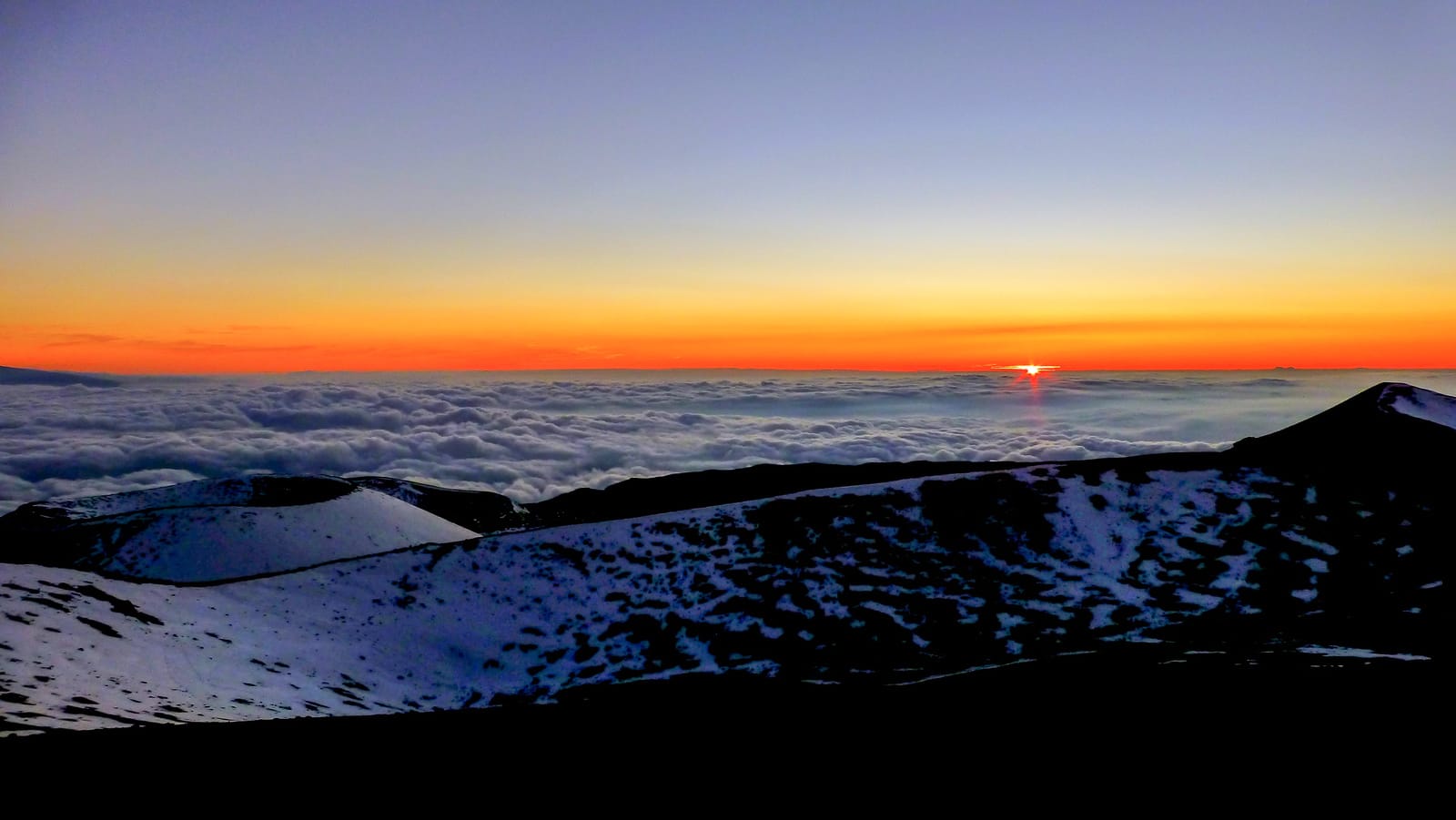
When planning to visit the Summit at Mauna Kea during winter, check the weather forecast beforehand, as there is typically a lot of snowfall. We were fortunate to avoid any road closures during our visit in February.
The best way to stay informed about the weather conditions is to check the National Weather Service or the Maunakea Weather Centre for updates.
A Living Mountain with Every Kind of Climate Zone
Mauna Kea is truly impressive due to its diverse climate zones that range from tropical rainforests to alpine deserts. The flora and fauna found here are exceptional, but the harsh winds, snow, and rain constantly impact and erode the fragile ecosystem of Mauna Kea.
One of the most unusual plants that survive in this environment is the Ahinahina, also known as the Silversword. It grows on the slopes of Mauna Kea and the East Maui volcano Haleakala.
The name Ahinahina translates to "grey-grey" in Hawaiian. Also, when visiting the Visitor Information Station, check out the surrounding subalpine forest, home to native Hawaiian Mamane trees.
Am I Going to Be Sick at the Peak of Mauna Kea?
There's always a risk of altitude sickness when visiting high-altitude locations. For this reason, we recommend stopping by the Information Centre first. It will give you time to acclimate to the temperature and altitude before continuing further.
Due to the thinner oxygen at higher altitudes (about 40% less than at sea level), you may experience dizziness and difficulty with coordination.
You may feel like you've been exercising heavily and need to catch your breath. Don't worry; your body will soon adjust to these symptoms.
Best Time to Visit Mauna Kea
To fully experience the beauty of a Mauna Kea sunset, arrive just before the sun sets. But leave enough time to enjoy the view before descending the volcano - half an hour after the sun sets. Overnight stay is not permitted.
Otherwise, visiting Mauna Kea at any time will be a memorable experience.
Mauna Kea Checklist
Before you visit, here's a helpful checklist:
- Only 4-wheel drive vehicles are allowed beyond the Maunakea Visitor Information Station.
- Keep your headlights on when driving up Mauna Kea.
- Fill up your vehicle's tank before your journey as there are no petrol stations at the visitor center.
- Dress warmly for the cold weather or pack thermal overalls.
- Be patient with parking as it can get crowded.
- If your vehicle becomes disabled, contact the Maunakea Rangers at (808) 961 2180.
- The summit visiting hours are from half an hour before sunrise until half hour after sunset. For your safety, leave the peak soon after sunset.
- Groups of 10 or more require a Special Use permit.
- Off-road driving is strictly prohibited as Mauna Kea is a sensitive environment. Please treat it with respect.
- Stargaze at the Visitor Information Station and grab some hot chocolate for yourself and your driver if hitchhiking.
- If you plan to hike to the summit, ensure you are fully prepared.
- Refrain from littering for the preservation of the area.


